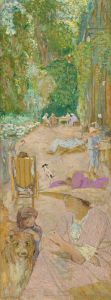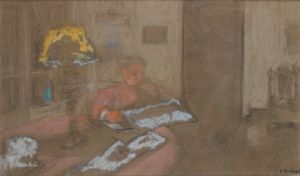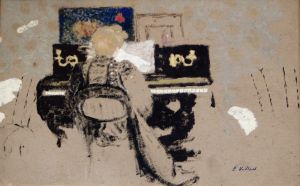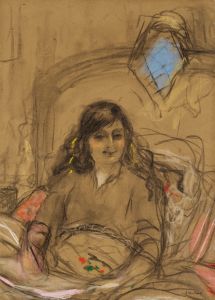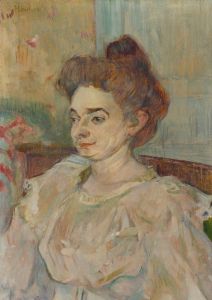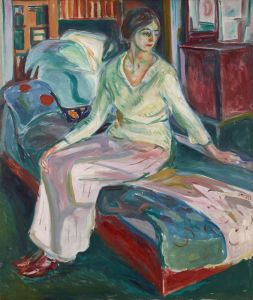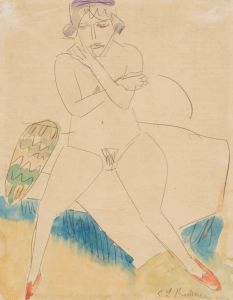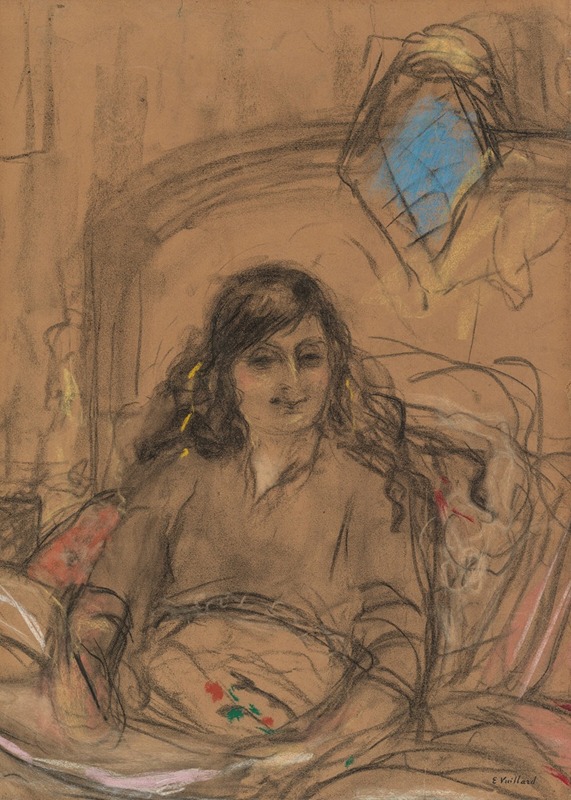
Étude pour La comtesse Anna de Noailles
A hand-painted replica of Édouard Vuillard’s masterpiece Étude pour La comtesse Anna de Noailles, meticulously crafted by professional artists to capture the true essence of the original. Each piece is created with museum-quality canvas and rare mineral pigments, carefully painted by experienced artists with delicate brushstrokes and rich, layered colors to perfectly recreate the texture of the original artwork. Unlike machine-printed reproductions, this hand-painted version brings the painting to life, infused with the artist’s emotions and skill in every stroke. Whether for personal collection or home decoration, it instantly elevates the artistic atmosphere of any space.
Édouard Vuillard, a prominent French painter associated with the Nabi movement, created the artwork "Étude pour La comtesse Anna de Noailles" as part of his extensive oeuvre that often explored intimate domestic interiors and portraits. Vuillard was known for his ability to capture the subtleties of human expression and the ambiance of the spaces his subjects inhabited, often using a muted color palette and intricate patterns.
Anna de Noailles, the subject of this study, was a renowned French poet and writer of Romanian and Greek descent. Born in 1876, she became a significant cultural figure in early 20th-century France, celebrated for her literary contributions and her vibrant social life. As a member of the Parisian elite, she was acquainted with many artists and intellectuals of her time, which likely led to her association with Vuillard.
Vuillard's study of Anna de Noailles is a testament to his skill in portraiture, capturing not just the likeness but also the essence of his subjects. His approach often involved a deep observation of the subject's environment and personality, which he translated onto the canvas with a keen eye for detail and composition. Vuillard's work is characterized by its emphasis on mood and atmosphere, often achieved through his use of color and texture.
The painting "Étude pour La comtesse Anna de Noailles" is believed to be a preparatory work, suggesting that Vuillard may have been exploring different aspects of composition or experimenting with how best to represent the countess. Such studies were common in Vuillard's process, allowing him to refine his ideas before committing to a final piece. This method reflects the artist's dedication to capturing the nuanced interplay between his subjects and their surroundings.
Vuillard's connection to the Nabi movement is evident in his approach to this study. The Nabis, a group of post-impressionist avant-garde artists, were known for their symbolic and decorative style, often incorporating elements of Japanese art and emphasizing the flatness of the picture plane. Vuillard, as a member of this group, frequently employed these techniques, focusing on the emotional and spiritual dimensions of his subjects rather than striving for photographic realism.
The study of Anna de Noailles is a reflection of Vuillard's broader artistic philosophy, which sought to convey the inner life of his subjects through the careful orchestration of color, pattern, and form. His portraits are often intimate and introspective, offering viewers a glimpse into the private worlds of his sitters.
While specific details about the creation and current location of "Étude pour La comtesse Anna de Noailles" may not be extensively documented, the work remains an important part of Vuillard's legacy. It exemplifies his ability to blend the personal with the pictorial, creating works that resonate with both visual beauty and psychological depth.
Vuillard's portraits, including this study, continue to be appreciated for their unique approach to capturing the essence of the individuals he painted. His work remains influential, offering insights into the artistic and cultural milieu of his time, as well as the enduring power of portraiture to convey the complexities of human identity and experience.






